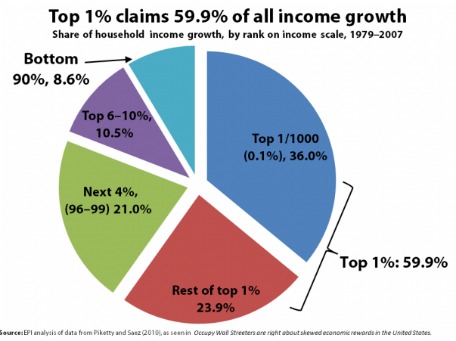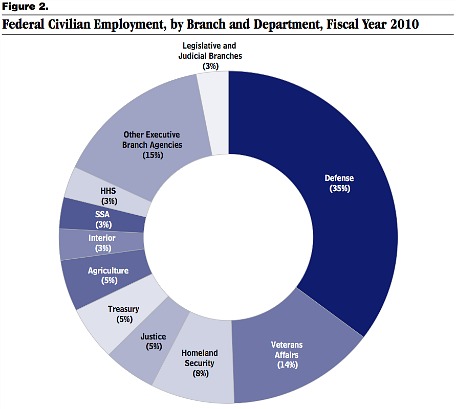Brad DeLong catches The Wall Street Journal editorial page in some hilariously bad math.
Here’s Stephen Moore:
Federal workers on balance still receive much better benefits and pay packages than comparable private sector workers, the Congressional Budget Office reports. The report says that on average the compensation paid to federal workers is nearly 50% higher than in the private sector, though even that figure understates the premium paid to federal bureaucrats.
CBO found that federal salaries were slightly higher (2%) on average, while benefits — including health insurance, retirement and paid vacation — are much more generous (48% higher) than what same-skilled private sector workers get.
Yikes.
Two apples plus forty-eight grapes does not equal fifty apple-sized fruits. You can’t add percentage increases from different sets together to figure out a combined percentage increase.
Since salaries represent the vast majority of total compensation, that two percent matters more than that 48 percent. In reality, the CBO found that on average, federal employees make 16 percent more than private-sector counterparts: $52.50 an hour in total comp on average versus $45.40.
Not one of the subgroups measured by the CBO makes 50 percent more. High-school-educated workers make 36 percent more than similar private-sector workers, while federal workers with a professional degree make 18 percent less than their counterparts.
The Journal‘s own commenters have had a field day with this, and it’s been ridiculed in the past two days by DeLong and Paul Krugman. DeLong wrote this:
We will see if anybody at the Wall Street Journal is honorable enough to run a retraction and a correction.
Don’t hold your breath. Two days later, it’s still uncorrected.
Meantime, it’s certainly legitimate question to ask whether federal government workers should be paid 16 percent more than private-sector workers with similar qualifications in similar jobs, but I’d love to see some trendlines on this disparity. How has that number changed over the years? I suspect that wage stagnation in the private-sector, which has allocated most of the economy’s gains to the top 1 percent of earners over the last few decades, is responsible for most of the current disparity.
Meantime, it’s worth noting another chart in the CBO’s report. Most federal employees work for the military and defense agencies like Homeland Security and The Wall Street Journal editorial page is very much pro Big Military:
Ryan Chittum is a former Wall Street Journal reporter, and deputy editor of The Audit, CJR’s business section. If you see notable business journalism, give him a heads-up at rc2538@columbia.edu. Follow him on Twitter at @ryanchittum.


